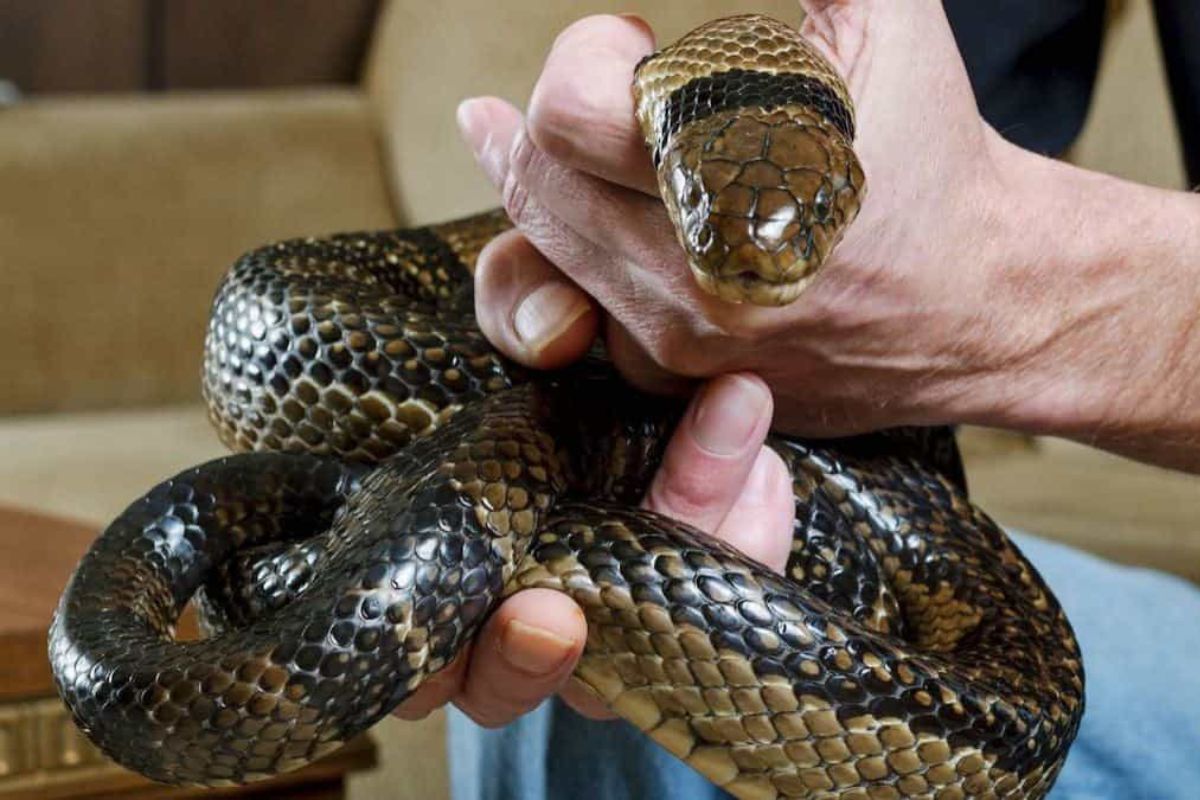Show table of content Hide table of content
In a remarkable display of scientific dedication, Tim Friede has endured approximately 200 snake bites and 700 venom injections over 18 years, transforming his blood into what researchers believe could become a revolutionary antivenom. This American snake enthusiast’s extreme self-experimentation may lead to unprecedented medical breakthroughs in treating venomous snake bites, which claim an estimated 140,000 lives annually worldwide.
The extraordinary journey of a human snake bite volunteer
Tim Friede’s unusual journey began with a seemingly simple goal: to develop personal immunity that would protect him while handling venomous snakes. What started as a personal quest evolved into something much more significant when scientists recognized the potential value of his blood’s unique properties.
“It became a lifestyle and I continued to push, push, and push as hard as possible, for people dying from snake bites 5,000 miles from my home,” explains Friede. His commitment remained steadfast despite two cobra bites that initially left him comatose.
News This TikToker buys a used van and realizes it has a hidden surveillance device.
The dedication shown by Friede mirrors other remarkable acts of animal-human interaction, though in vastly different contexts. In a similarly extraordinary display of courage, there was a case where a husband jumped on a polar bear to protect his wife during an attack, demonstrating the lengths humans will go to when facing dangerous wildlife.
Friede has meticulously documented his snake handling exploits on YouTube, creating a visual record of his unusual scientific contribution. His motivation transcended personal curiosity, focusing instead on developing better therapies for snake bite victims worldwide. “I didn’t want to die. I didn’t want to lose a finger. I didn’t want to miss work,” he states, underlining the calculated risks behind his dangerous approach.
Scientific breakthrough in antivenom development
Traditional antivenom production involves injecting small amounts of venom into animals like horses, allowing their immune systems to produce antibodies that are later harvested. However, these antivenoms typically only work against specific snake species due to variations in toxins, creating significant treatment limitations.
The scientific community has long sought a more versatile solution, similar to how researchers track and study rare wildlife phenomena. Just as scientists recently documented an extremely rare sea creature appearing after an iceberg breakage, medical researchers have been searching for breakthroughs in antivenom development.
Dr. Jacob Glanville, CEO of biotechnology company Centivax, recognized Friede’s potential contribution to this field. “Immediately, I thought if anyone in the world had developed these broadly neutralizing antibodies, it was him,” Glanville recounted. “During the first call, I said: ‘This might be awkward, but I’d really like to get my hands on some of your blood.'”
Friede agreed, initiating a research partnership that focused specifically on elapids—venomous snakes like cobras and mambas that use neurotoxins to paralyze victims and block muscles necessary for breathing. His unusual immunity profile offered scientists an unprecedented research opportunity.
Unprecedented protection against multiple snake species
The research team, which published their findings in the scientific journal Cell, identified two broadly neutralizing antibodies in Friede’s blood that target two classes of neurotoxins. By adding a medication that targets a third class, they created a promising treatment cocktail.
This combination allowed mice to survive lethal doses from 13 of 19 tested snake species, with partial protection against the remaining six. Dr. Glanville describes this as “unprecedented” protection that could potentially cover “a whole range of elapids for which there is currently no antivenom.”
News Bat wings after 50? Here’s the most effective exercise, according to a coach.
The scientists’ dedication to saving lives mirrors other remarkable animal rescue stories, though in different contexts. While Friede’s work may help prevent human deaths, there are also touching stories of animal salvation, like a dog rescued from a slaughterhouse truck now living happily thousands of miles away.
This breakthrough is particularly significant because current antivenoms must be constantly adapted to specific venomous snake species. The geographic variations within species further complicate treatment—antivenom made from Indian snakes, for example, proves less effective against the same species in Sri Lanka.
Future implications of this revolutionary research
The researchers estimate they need another 10 to 15 years to produce an antivenom effective against each toxin class. “Tim’s antibodies are truly extraordinary. He taught his immune system to achieve very broad recognition,” one researcher noted. “This work undoubtedly advances the field in an exciting direction.”
Such dedication to helping others through personal sacrifice isn’t limited to humans. In the animal kingdom, there are extraordinary examples of service, such as a Gordon Setter that saved over 160 dogs through blood donations, demonstrating that the instinct to protect others crosses species boundaries.
Before human use, the antivenom still requires extensive testing. Meanwhile, Friede remains enthusiastic about his contribution to this revolutionary development. “I’m doing something good for humanity, which was very important to me. I’m proud of it. It’s really cool,” he says.
This research represents unprecedented hope for developing a universal vaccine against snake venom. Even animals demonstrate remarkable gratitude when saved from danger, as shown when a crow thanked the man who rescued it by helping with his job. Similarly, humanity may soon express collective gratitude to Tim Friede when his unusual sacrifice potentially saves thousands of lives worldwide.
As of May 2025, this groundbreaking research continues, offering new hope to regions where venomous snakes pose significant public health challenges, potentially transforming snake bite treatment protocols worldwide.


